[Case Study] How Anyreach Approaches the Sales Process for Agentic AI
![[Case Study] How Anyreach Approaches the Sales Process for Agentic AI](/content/images/size/w1200/2025/07/ChatGPT-Image-Jul-22--2025--03_41_36-PM.png)
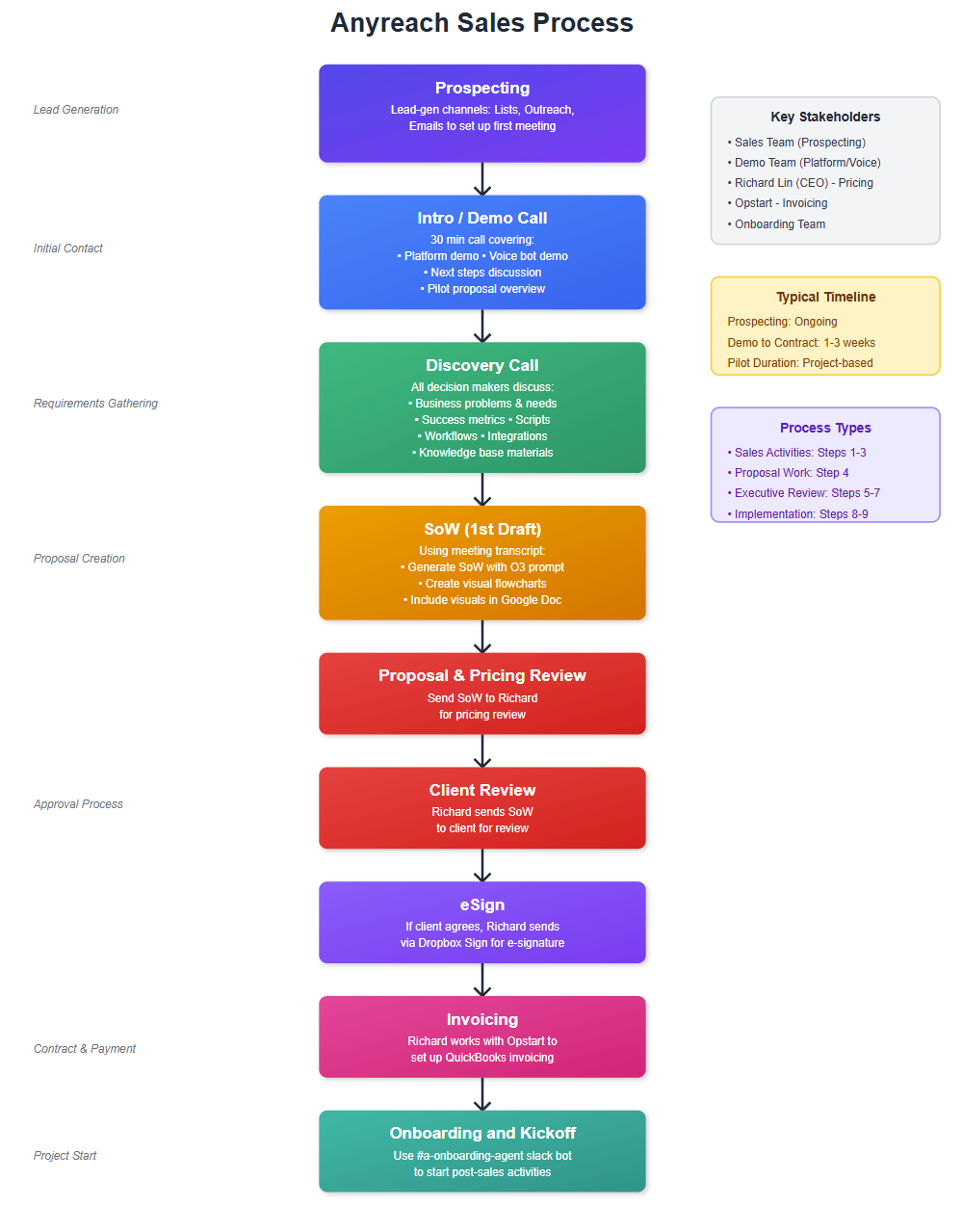
From First Touch to Kick-Off: A Behind-the-Scenes Look at Anyreach’s Sales SOP
Selling AI-powered voice and chat solutions isn’t just about dazzling demos. It’s about guiding prospects through a clear, repeatable journey—from that first cold email all the way to a successful onboarding kickoff. At Anyreach, we’ve distilled years of trial-and-error into an eight-step Sales Standard Operating Procedure (SOP) that keeps deals moving, stakeholders aligned, and value front-and-center.
Below is a peek behind the curtain at how we do it (and why each step matters).
1️⃣ Prospecting – Planting the Seeds
Every great customer story begins with a spark of curiosity.
Our Growth team works a multi-channel playbook—curated lead lists, partnership programs, conference booths, targeted content, and good-old handcrafted emails—to set that first 30-minute meeting. A modern CRM telemetry stack (Attio) tracks touches so no opportunity slips through the cracks.
Why it matters: Structured prospecting prevents “random acts of outreach,” focuses reps on ICP-fit accounts, and ensures a warm hand-off once interest is piqued.
2️⃣ Intro / Demo Call – Showing, Not Just Telling
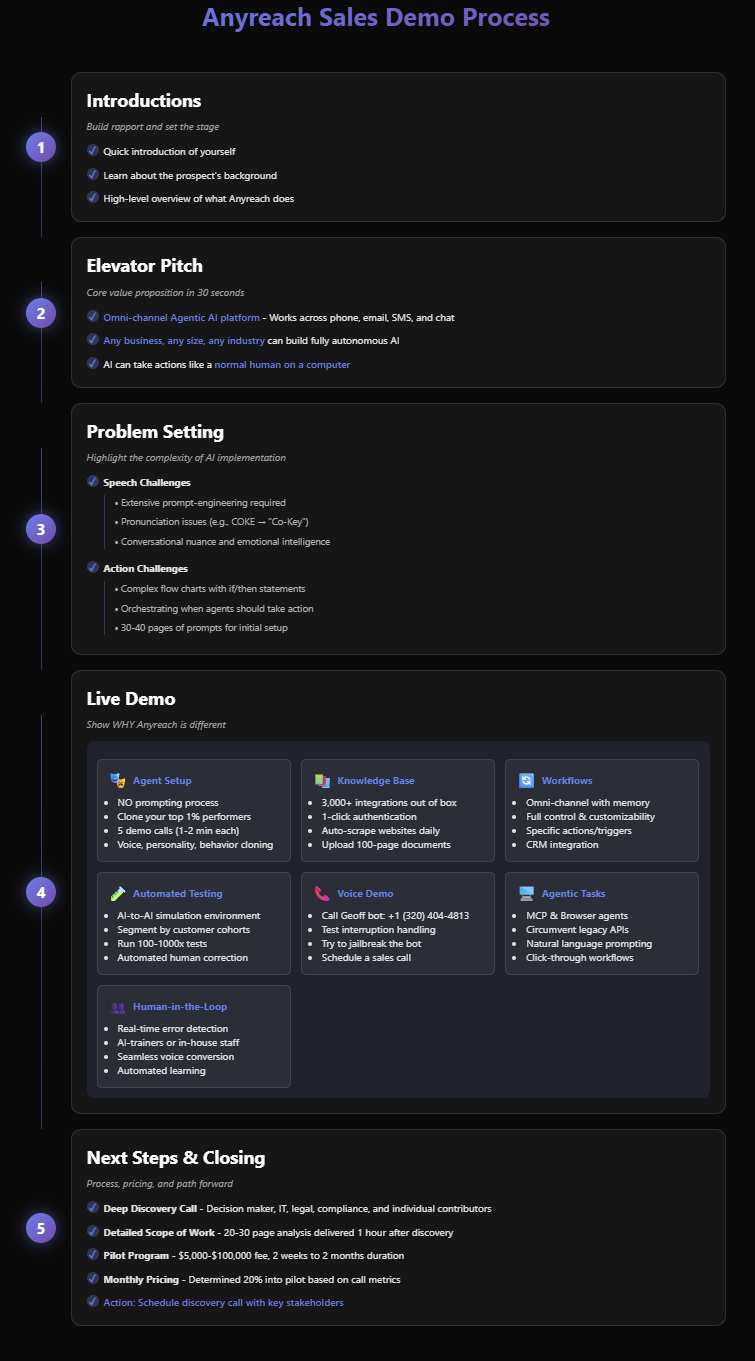
In a tight 30-minute slot we:
- Frame the problem we solve (broken voice channels, sky-high support costs, missed upsell opportunities).
- Demo the platform—often live inside an AI-simulate canvas—plus a quick call to Geoff, our voice bot (+1 320-404-4813).
- Lay out next steps: 60-minute discovery, pilot proposal, and indicative recurring pricing.
Why it matters: Prospects leave with a tangible sense of “this works” and a clear path forward—momentum is everything.
(Optional) MNDA – Red-Tape, Simplified
Enterprise prospects sometimes need mutual NDAs before deeper dives. We trade minimal redlines, lean on AI contract review to cut legal hours, and get signatures fast.
When enterprise prospects request a Mutual Non-Disclosure Agreement (MNDA), it’s crucial to keep the process fast and frictionless—without compromising legal coverage.
At Anyreach, we’ve developed a streamlined approach that accommodates both our own MNDA template and client-provided versions, minimizing back-and-forth while preserving clarity.
🛠️ How We Handle It:
- Default to Our Template
Whenever possible, we send the standard Anyreach MNDA to clients. It's legally sound, concise, and optimized for fast signature. - If the Client Sends Their Own
- Use a document comparison tool (like Gemini) to identify any changes or redlines.
- Review discrepancies and assess if adjustments are necessary.
- Flag potential risks and note areas that deviate from our norms.
- Escalate When Necessary
If redlines are extensive or introduce complex legal concerns, escalate the document for internal legal review. - Communicate Transparently
Prepare a simple, client-facing explanation of any requested changes to ensure transparency and preserve deal momentum.
The goal: keep legal reviews lightweight, reduce dependency on lawyers for every deal, and move quickly without sacrificing protection.
Example MNDA
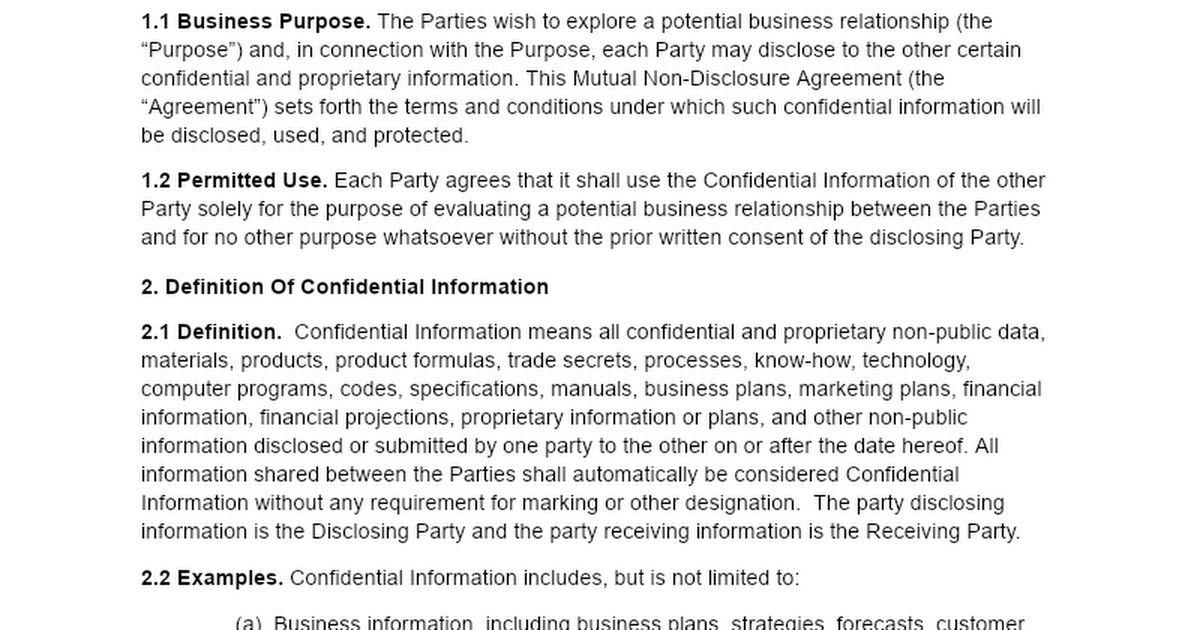
Pro tip: Keep your MNDA template “redline-light” so legal doesn’t stall the deal.
3️⃣ Discovery Call – Surfacing the Gold
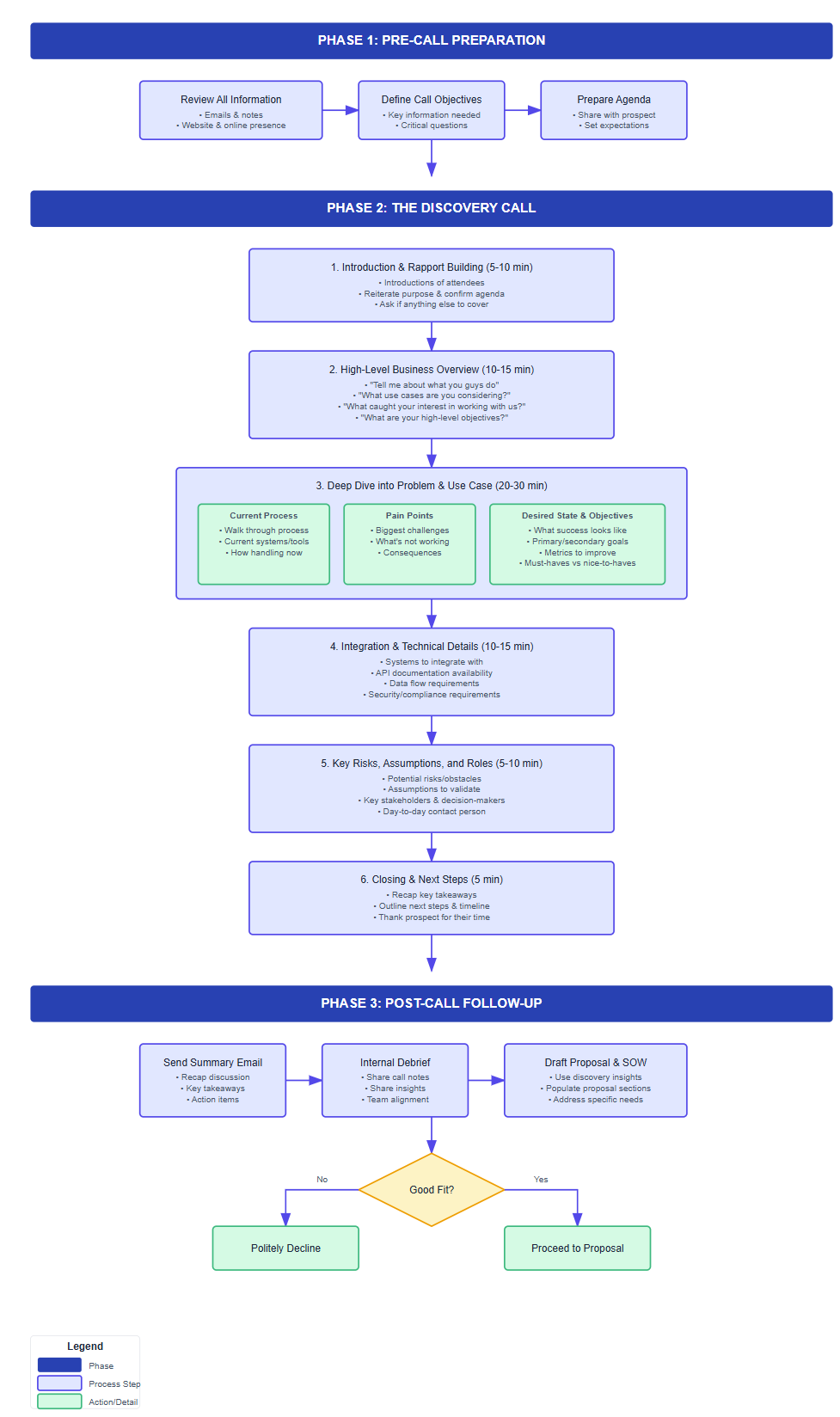
Now the bigger table shows up: decision-makers, ICs, often finance and ops. We dive into business pain, success metrics, workflow maps, integration stack, and knowledge-base gaps—captured by AI note-takers so the team can stay present.
The Discovery Call process at Anyreach is a structured, three-phase approach:
- Pre-call Preparation: Research the prospect, define call objectives, and prepare an agenda to align expectations.
- Live Call Execution: A step-by-step framework guides the conversation—from rapport building to deep exploration of pain points, technical requirements, and success metrics.
- Post-call Follow-up: Summarize insights, debrief with the team, and draft a tailored proposal and Statement of Work (SOW) using the collected information.
1️⃣ Pre-Call Preparation: Show Up Informed
Before every discovery call, our team reviews:
- Past emails, meeting notes, and prospect background
- The client’s website, LinkedIn, and market landscape
- Relevant industry trends and challenges
We define clear objectives (e.g., uncover integration needs, clarify deliverables) and share a short agenda with the prospect beforehand to set the tone.
2️⃣ During the Call: Guide with Structure, Listen with Purpose
Our calls typically follow this six-part flow:
- Introductions & Agenda Review
Build rapport, clarify the call's purpose, and ensure mutual alignment on the agenda. - Business Overview
Understand the company’s mission, market, use cases, and goals. - Deep Dive into Challenges
Unpack workflows, pain points, and desired outcomes—both qualitative and quantitative.
Key areas: current processes, blockers, goals, and what success looks like. - Technical & Integration Details
Explore their systems, API readiness, data flows, and compliance needs. - Risks, Roles & Assumptions
Identify potential blockers, clarify decision-makers, and surface hidden assumptions. - Next Steps
Recap the conversation, confirm action items, and outline what happens next.
This structure ensures we don’t just pitch—we partner.
3️⃣ Post-Call Follow-Up: Turn Insight Into Action
After the call, we move quickly to:
- Send a clear recap email with next steps
- Debrief internally with the broader team
- Draft a tailored proposal and SoW grounded in the prospect’s stated needs
This disciplined approach transforms discovery calls from open-ended chats into momentum-generating conversations—anchored in trust, clarity, and shared goals. It's how we bridge interest into implementation with speed and confidence.
Why it matters: A great discovery unlocks a laser-focused Statement of Work (SoW), prevents scope creep later, and ensures all parties are fully aligned on what's being delivered.
4️⃣ SoW Draft – Turning Insight into Blueprint
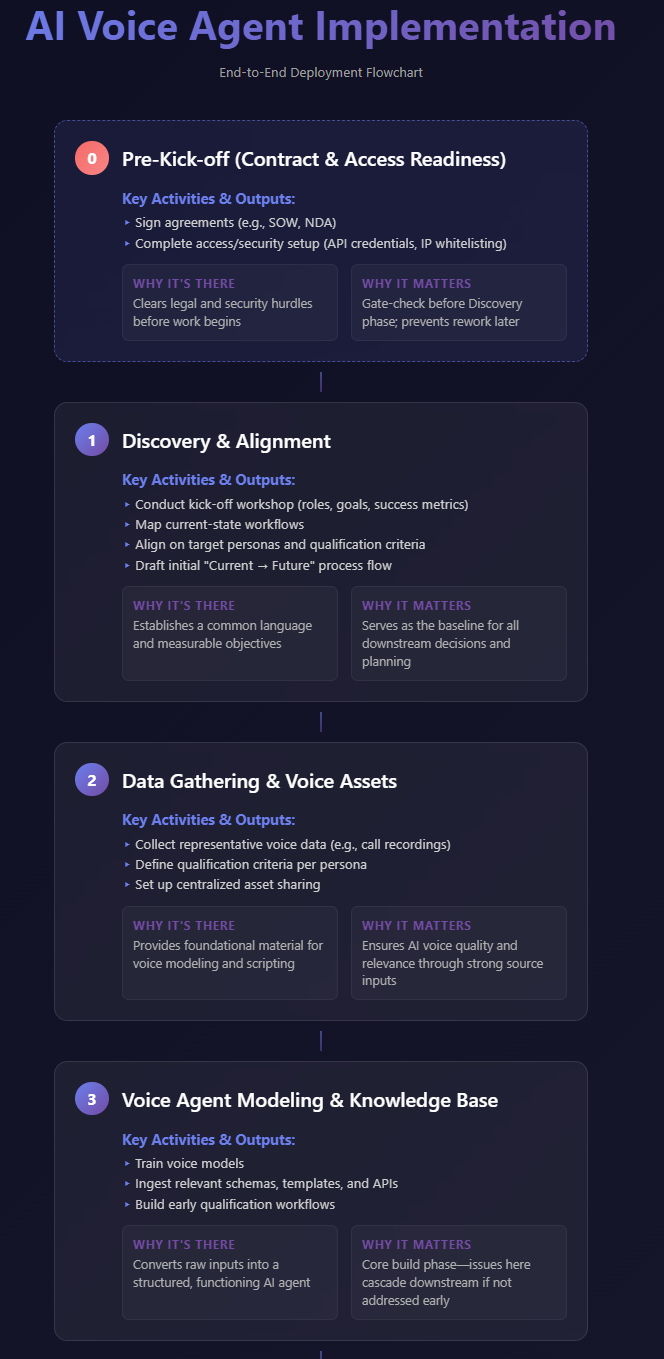
Transcript in hand, we feed o3 (our generative copilot) a prompt that outputs:
- Cover page & project background
- Objectives (qual + quant)
- Scope & deliverables
- Integration & data schema
- Risks / assumptions
- Roles & responsibilities
- Timeline & targets
- Commercial terms
We add visual flowcharts for clarity and drop everything into a Google Doc prototype.
ChatGPT o3-Pro
Generate a Proposal and SoW from the following transcript, include the following in the SoW (cover page, intro/background, objectives, scope and deliverables, integration points / data schema, key risks / assumptions, roles / responsibilities, timeline / targets, commercial terms, signature block)
Cover page
Proposal: Anyreach {{company name}} {{use case}} Prepared for: {{company name}} Prepared by: Anyreach, Inc. Date: {{today’s date}}
Intro/background include the company background info, stakeholders, high-level objectives and asks, metrics, use case, etc…
Objectives provide both qual and quant feedback from the transcript of what success looks like and primary and secondary goals
Scope and deliverables Provide high-level titles of what work is required with 1-2 sentence descriptions of what that entails
Integration & data schema Based on what the prospect mentioned as the workflow, platforms/tools, and use case write up a detailed spec on the tools and what data needs to flow through the system to do the job
Key risks / assumptions Determine based on the scope of this work what potential edge case / gaps have still yet to be answered. Do your best to determine that, these edge cases won’t be fully accurate until we do the work, but helps set expectations we are thinking of these things.
Roles / Responsbilities Determine both from Anyreach and prospects side who are the decision makers, DRIs, and lead for the project and provide the specific responsibilities each will be owning, how much time (est.) it will take so that everyone is aligned on making sure the right people are in place to make this project a success
Commercial Terms This proposal is to cover a pilot pricing as a one-time fee. The pilot cost is 50/50 split. The first half is paid upfront, the other half upon project completion. Based on the scope and stakeholders needed from the Anyreach side, determine what the overall pilot pricing will be (ranging from $5K - $100K). Also consider from the transcript and company size / stage what would be a reasonable price in your cost estimation
Signature Block
Anyreach
Richard Lin (CEO)
Anyreach, Inc. richard@anyreach.ai
{{Prospect Company name}}
{{Decision Maker}}
{{company name}}
{{decision maker email}}
TRANSCRIPT {{transcript}}
Claude Opus 4 - Mermaid
Based on the follow markdown {{section}}, generate a process mapping visual for a flowchart (color coded). Ensure you include as much detail as possible, but consider readability and UI/UX design
Example SoW/Proposal Output
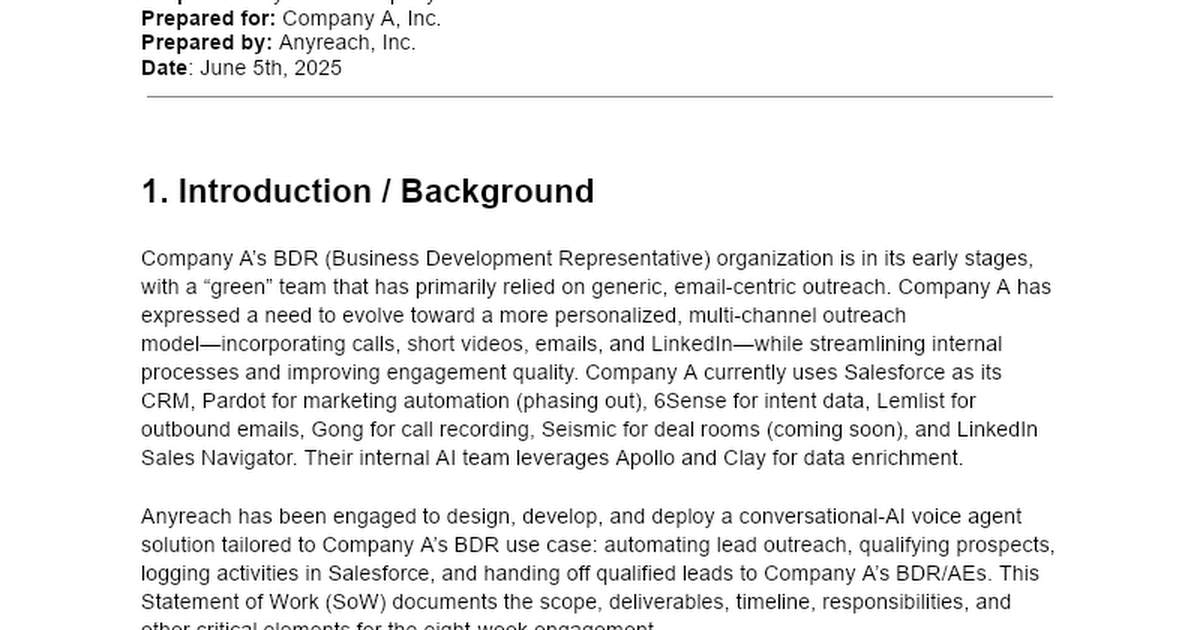
Why it matters: Prospects see complexity distilled into an executable plan—confidence goes up, friction goes down.
5️⃣ Proposal & Pricing Review – Sanity Check + Margin Guardrails
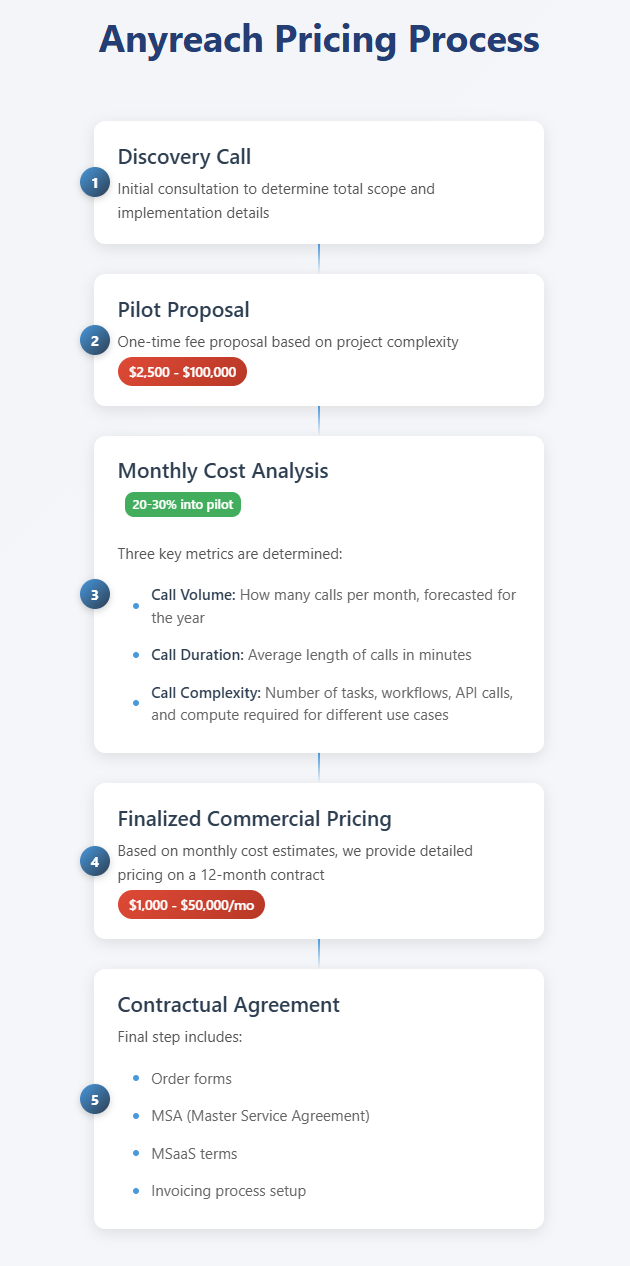
Before a quote goes out, Richard (CEO) reviews the SoW, validates the time estimate from o3 (plus a 25 % buffer), and benchmarks pricing against deal size, implementation complexity, usage/consumption costs:
| Segment | Typical Pilot Range |
|---|---|
| Small Business | $2.5 K – $7.5 K |
| Mid-Market | $10 K – $25 K |
| Enterprise | $25 K + |
Why it matters: Centralized pricing discipline protects gross margin and keeps proposals consistent.
6️⃣ Client Review & eSign – Crossing the T’s
Once thumbs-up arrive, we send the packet via Dropbox Sign. Signed docs drop into a numerically-prefixed Drive folder so legal docs stay organized for finance and ops with easy shareability with external parties.
One of the biggest friction points in closing and onboarding clients is paperwork—and that’s exactly why Anyreach uses a standardized Order Form to streamline legal and financial workflows.
Instead of juggling multiple documents and back-and-forth approvals, the Order Form acts as a single source of truth. It pulls together all key terms, billing schedules, deliverables, and timelines—while referencing both the Master Service Agreement (MSA) for professional services and the Master SaaS Agreement (MSaaS) for software subscriptions.
https://anyreach.ai/saas-agreement
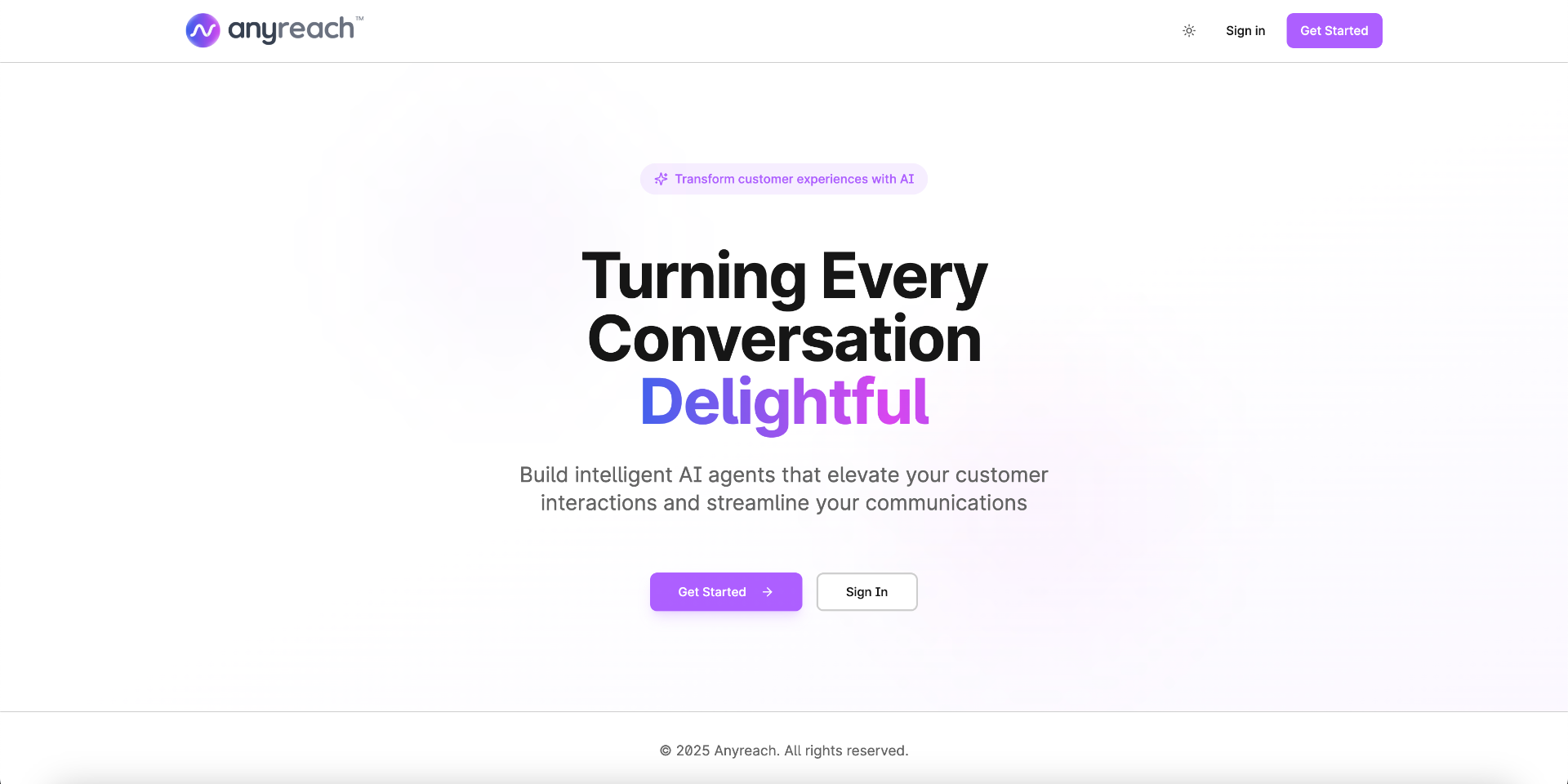
💡 How It Works:
- Universal for all deals: Whether a client buys software, services, or both, the Order Form is mandatory to ensure consistency.
- Smart integrations: The template includes built-in references to legal agreements and uses HelloSign for seamless e-signatures directly in Google Docs.
- Post-signature automation:
- Upload the signed form to the our internal contracts repo
- Notify A/R via Slack to trigger QuickBooks setup
- Enable auto-invoicing and share payment links
- Send a kickoff email with the signed contract and payment instructions
This simple but powerful framework minimizes delays, reduces legal overhead, and ensures finance and ops teams are ready to go the moment the ink dries.
7️⃣ Invoicing – Cash Meets Commitment
The moment the ink dries, finance spins up a QuickBooks invoice (or full Sales & Order Form for larger packages) with 50 / 50 milestone terms. Channel #v-opstart tracks status so Sales, Ops, and RevOps stay in sync.
Example Order Form
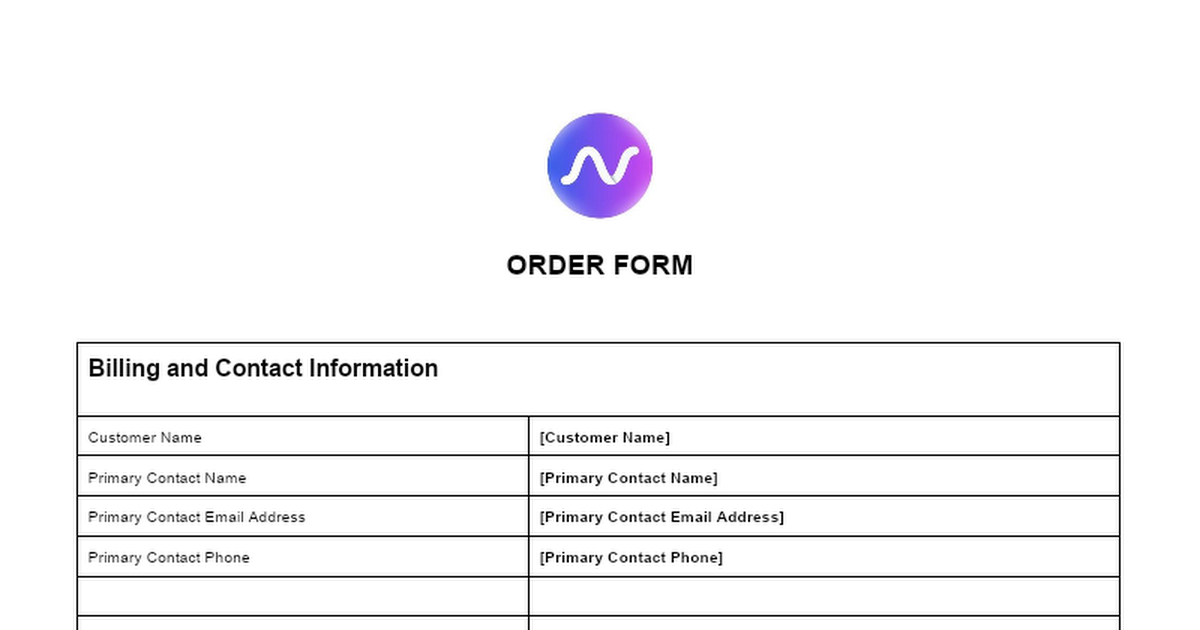
8️⃣ Onboarding & Kickoff – Delivering on the Hype
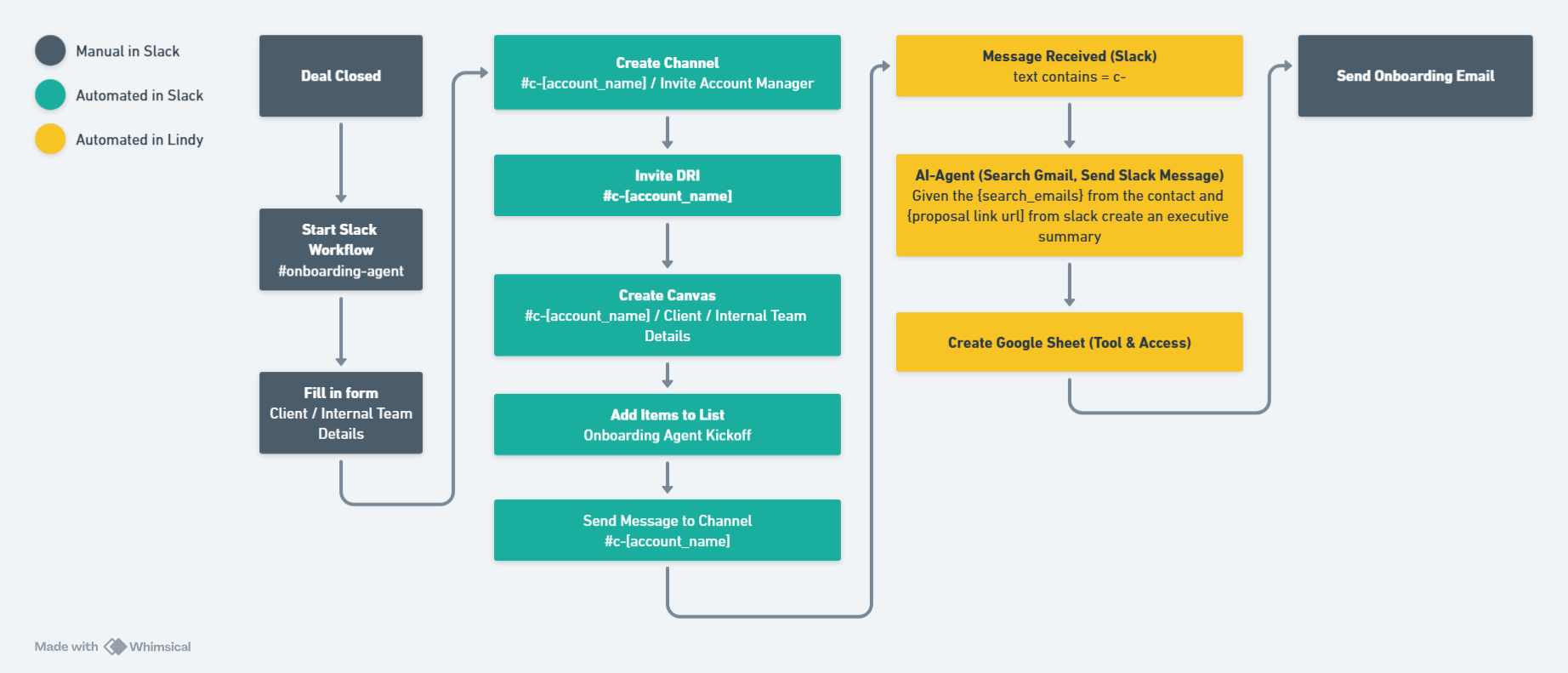
The baton passes to Delivery via Slack’s #a-onboarding-agent bot. A templated announcement captures kickoff date, internal DRIs, links to the proposal, and first-week milestones—automatically populating our Client Projects dashboard in Notion.
At Anyreach, we believe great onboarding sets the tone for long-term client success. That’s why we’ve built a repeatable, tech-enabled onboarding process that kicks in the moment a deal is closed. Here's how we go from signed contract to project kickoff—without missing a beat.
PHASE 1: Internal Setup
1. Deal Closure & Automation Trigger
Once a contract is signed:
- The finalized proposal is stored in the appropriate shared workspace.
- Internal systems (CRM, finance tools) are updated.
- An onboarding workflow is triggered via our internal automation tools, which handle:
- Creating a dedicated Slack channel
- Generating a shared folder with structured subfolders
- Assigning relevant internal team members
- Preparing a centralized access sheet for tools and credentials
2. Internal Collaboration Hub
An internal messaging channel is auto-created and populated with:
- Project summary (scope, deliverables, timeline)
- Links to key documents
- FAQs and a knowledge base to ensure everyone is aligned
3. Shared Folder Structure
A project-specific folder is created with subfolders for:
- Tool access documentation
- Signed contracts
- Meeting notes and recordings
- Working files as needed
Permissions are set so that relevant team members have immediate access, with external sharing enabled once client contacts are confirmed.
4. Tool Access Management
A shared access sheet is generated to track:
- Tools in use
- Descriptions
- Login credentials or URLs (when applicable)
This document is maintained throughout the engagement to ensure seamless access control.
5. Task Tracking (Recommended)
While optional, creating a project board in a tool like Asana or Trello is encouraged for tracking tasks, owners, deadlines, and deliverables.
PHASE 2: Client Communication & Kickoff
1. External Workspace Setup
If applicable, an external communication channel is created, and client stakeholders are invited. The welcome message includes:
- A concise project summary
- Links to the shared drive and access sheet
- Initial milestones and next steps
2. Kickoff Email
The kickoff email outlines:
- Week 1 agenda and goals
- Where key documents and links are located
- Points of contact for the project (e.g., account manager, technical lead)
- Recurring sync logistics and expectations
PHASE 3: Post-Kickoff Follow-up
1. Internal Alignment
A short internal sync (optional) can help confirm responsibilities and immediate deliverables. Task-tracking tools are updated with owners and deadlines.
2. Ongoing Client Updates
Teams maintain consistent communication through email or Slack:
- Sharing meeting notes and recordings
- Posting summaries and action items
- Uploading assets to the shared folder
3. Access Management
The access sheet is kept up to date, and permissions are reviewed periodically to reflect project changes.
4. Clear Points of Contact
Clients are reminded of their primary point of contact, and encouraged to provide ongoing feedback throughout the project.
💡 Best Practices We Recommend
- Align with finance early for smooth billing and invoicing
- Define KPI reporting cadence, if part of the engagement
- Continuously train internal support tools and bots to answer process-related questions
- Send a brief satisfaction survey after the first 30 days to gather feedback and improve
A well-structured onboarding flow doesn’t just get projects off the ground faster—it builds trust, transparency, and momentum from day one. That’s what makes it one of the most important investments in client success.
Why it matters: A structured hand-off protects customer trust earned during presales and accelerates time-to-value.
Key Takeaways
- Process beats heroics. A clear SOP prevents dropped balls and shortens sales cycles.
- Automate the busywork. AI note-takers, contract reviewers, and pricing estimators free reps to build relationships.
- Transparency wins deals. Visual SoWs and milestone-based invoices make cost and scope crystal-clear.
- Always be onboarding. Closing is just the start; a frictionless kickoff secures expansion and referrals.
Whether you’re an early-stage startup searching for repeatability or an established team looking to shave weeks off your cycle, borrowing (and adapting) these steps can help you turn more “maybes” into long-term, delighted customers.
Want to see it in action? Book a demo and we’ll walk you through each stage live.



![[AI Digest] Access Blocked Today](/content/images/size/w600/2025/07/Daily-AI-Digest.png)